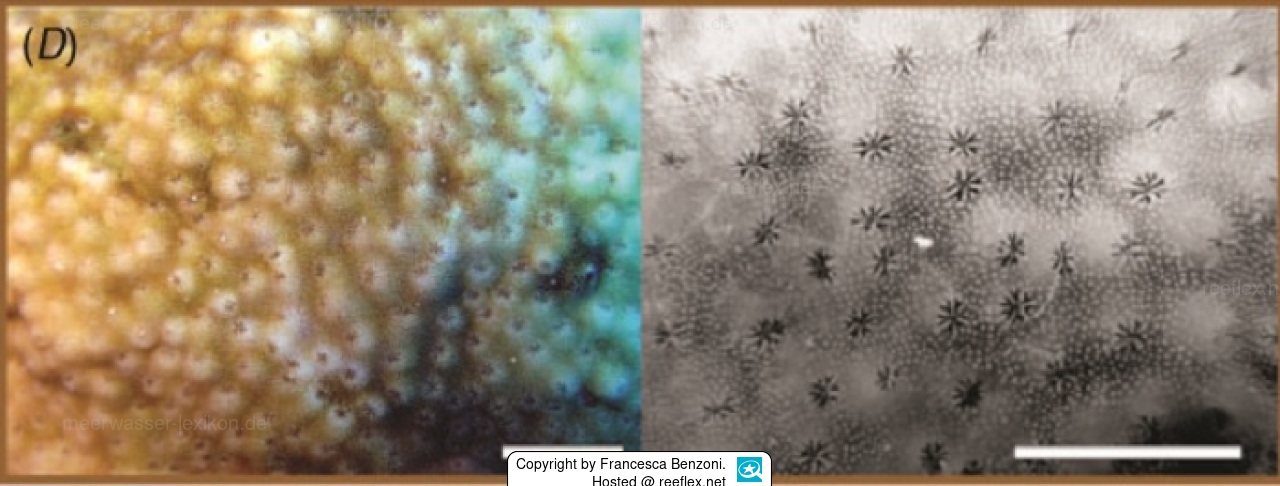Info
Veron, Turak & DeVantier, 2002
Source:
Cyphastrea (Cnidaria:Scleractinia:Merulinidae) in the Red Sea: Phylogeny and a new reef coral species
CSIRO PUBLISHING Invertebrate Systematics, 2017, 31, 141–156 http://dx.doi.org/10.1071/IS16035
Authors: Drs. Roberto Arrigoni, Michael L. Berumen, Danwei Huang, Tullia I. Terraneo and Francesca Benzoni
Description:
Characters: Colonies are massive, with a even or irregular surface. Corallites are widely spaced and immersed to tubular, the latter being strongly inclined on the colony surface. Calices are small. The coenosteum is covered with prominent spines which have elaborate surfaces. Septa are usually in two cycles. There are usually six primary septa although this varies among corallites.
Colour: Mottled brown.
Similar Species: None. The small, widely spaced corallites are distinctive. Cyphastrea microphthalma is readily identified by its 10 primary septa.
Habitat: Shallow reef environments.
Abundance: Uncommon.
Source:
http://www.coralsoftheworld.org/species_factsheets/species_factsheet_summary/2950/
Classification: Biota > Animalia (Kingdom) > Cnidaria (Phylum) > Anthozoa (Class) > Hexacorallia (Subclass) > Scleractinia (Order) > Merulinidae (Family) > Cyphastrea (Genus) > Cyphastrea hexasepta (Species)
Source:
Cyphastrea (Cnidaria:Scleractinia:Merulinidae) in the Red Sea: Phylogeny and a new reef coral species
CSIRO PUBLISHING Invertebrate Systematics, 2017, 31, 141–156 http://dx.doi.org/10.1071/IS16035
Authors: Drs. Roberto Arrigoni, Michael L. Berumen, Danwei Huang, Tullia I. Terraneo and Francesca Benzoni
Description:
Characters: Colonies are massive, with a even or irregular surface. Corallites are widely spaced and immersed to tubular, the latter being strongly inclined on the colony surface. Calices are small. The coenosteum is covered with prominent spines which have elaborate surfaces. Septa are usually in two cycles. There are usually six primary septa although this varies among corallites.
Colour: Mottled brown.
Similar Species: None. The small, widely spaced corallites are distinctive. Cyphastrea microphthalma is readily identified by its 10 primary septa.
Habitat: Shallow reef environments.
Abundance: Uncommon.
Source:
http://www.coralsoftheworld.org/species_factsheets/species_factsheet_summary/2950/
Classification: Biota > Animalia (Kingdom) > Cnidaria (Phylum) > Anthozoa (Class) > Hexacorallia (Subclass) > Scleractinia (Order) > Merulinidae (Family) > Cyphastrea (Genus) > Cyphastrea hexasepta (Species)







 Prof. Dr. Francesca Benzoni, Italien
Prof. Dr. Francesca Benzoni, Italien











